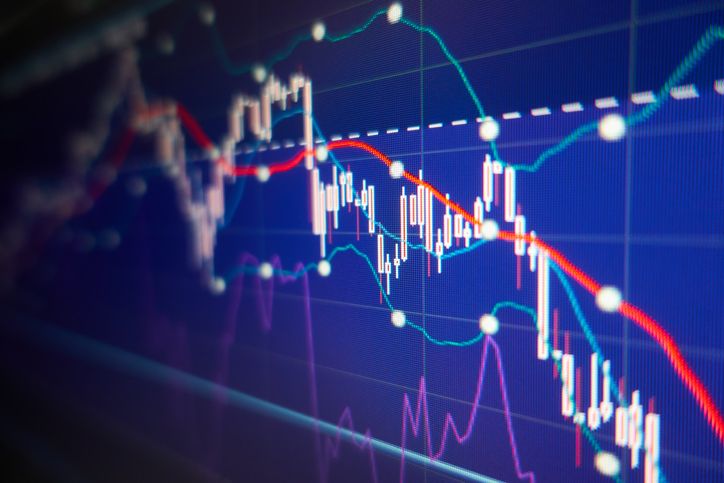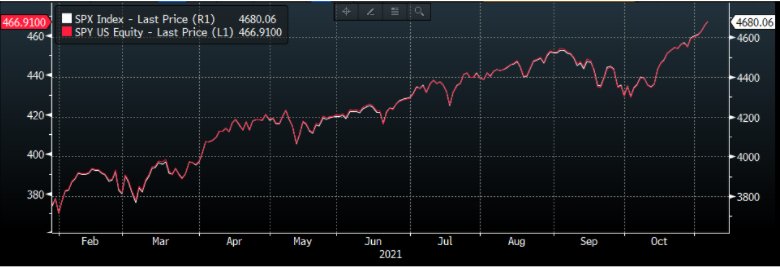James Brodie
Everything You Need to Know About ETF Trading

What is an ETF?
An Exchange Traded Fund (ETF) is a basket of securities that trades on an exchange.
ETFs have become incredibly popular because they offer diversification similar to a mutual fund, and also the flexibility and liquidity to transact like a stock.
Related article: Trading and Investing
ETFs have become incredibly popular because they offer diversification similar to a mutual fund, and also the flexibility and liquidity to transact like a stock.
Related article: Trading and Investing
Different Types of ETF
There are many types of ETF such as equity indices, equity sectors, bonds, commodities and leveraged ETFs but by far the most popular is the SPY ETF which replicates the U.S. S&P 500 index.
Purchasing one asset is obviously much easier than purchasing all 500 assets in the index so it’s a simple way to diversify.
The SPY ETF has a market capitalisation of $ 421.4 billion and at a peak has been as much as 16% of all transactions on the NYSE.
The SPY average daily volume is double that of the second largest fund the Invesco Nasdaq (QQQ) ETF, and five times the volume of third largest fund, iShares Russell 2000 (IWM).
Purchasing one asset is obviously much easier than purchasing all 500 assets in the index so it’s a simple way to diversify.
The SPY ETF has a market capitalisation of $ 421.4 billion and at a peak has been as much as 16% of all transactions on the NYSE.
The SPY average daily volume is double that of the second largest fund the Invesco Nasdaq (QQQ) ETF, and five times the volume of third largest fund, iShares Russell 2000 (IWM).
Other popular top 20 funds include, the iShares 20-year Treasury bond ETF (TLT), iShares high yield bond TEF (HYG), the SPDR Gold shares ETF (GLD), the health care sector ETF ((XLV), iShares China large cap ETF (FXI), SPDR Biotech ETF (XBI), the iShares emerging market ETF (EEM) and the iShares MSCI Brazil ETF (EWZ).
Popular new funds offering great diversity across emerging sectors include, iShares ESG ETF (ESGU), Invesco Solar ETF (TAN), ARK Innovation ETF (ARKK), Global X Fintech ETF (FINX) and the Invesco Agriculture ETF (DBA).
The Expense Ratio
ETF fees are known as the expense ratio. It is the total percentage of the fund’s assets used for administrative, management and all other fees.
Expense ratios are important when choosing a fund as they can impact returns materially. The SPY expense ratio is currently 0.094%, incredibly low!
Expense ratios are important when choosing a fund as they can impact returns materially. The SPY expense ratio is currently 0.094%, incredibly low!

Tracking Errors
A tracking error is when an ETF’s performance deviates from the performance of an index that it tracks.
This usually occurs during high levels of volatility where the ETF manager struggles to keep the basket of assets in-line with the index.
For instance, the manager may use futures to track the index, but futures can deviate from the index price though this is usually temporary as arbitrageurs’ profit from these discrepancies.
To limit the chances of tracking errors it is best to look for funds with high volume, and open-ended funds (where the ETF can be transferred for stock).
Again, these funds are more likely to be monitored by arbitrageurs who will profit from keeping tracking errors back into line.
This usually occurs during high levels of volatility where the ETF manager struggles to keep the basket of assets in-line with the index.
For instance, the manager may use futures to track the index, but futures can deviate from the index price though this is usually temporary as arbitrageurs’ profit from these discrepancies.
To limit the chances of tracking errors it is best to look for funds with high volume, and open-ended funds (where the ETF can be transferred for stock).
Again, these funds are more likely to be monitored by arbitrageurs who will profit from keeping tracking errors back into line.

The chart shows the S&P 500 Index (white) and the SPY iShares S&P ETF (red), with clearly very little tracking error. (Source: Bloomberg)
One particularly large tracking error was on 18th June 2020 when the Grayscale Ethereum ETF was trading at an unbelievable 515% premium to the Ethereum cryptocurrency price.
The reason was that regulators do not allow investors to allocate their pensions and 401k plans into cryptocurrencies, but they can invest in ETFs, so these large investment flows surged into the few crypto ETFs.
In reality this story is less about tracking errors and more about herd mentality, irrational investors, lack of due diligence and our behavioural biases.
The reason was that regulators do not allow investors to allocate their pensions and 401k plans into cryptocurrencies, but they can invest in ETFs, so these large investment flows surged into the few crypto ETFs.
In reality this story is less about tracking errors and more about herd mentality, irrational investors, lack of due diligence and our behavioural biases.

iShares ESG (environment, social & governance) ETF surging to new all time high levels. (Source: Bloomberg)
Related Article: Tips for New Traders - Err on the Side of Caution
Related Article: Tips for New Traders - Err on the Side of Caution
Where Can You Trade ETFs?
ETFs trade on exchanges and are incredibly easy for a retail investors to access.
All retail broking platforms provide ETF prices and most offer leverage to scale positions as well, but this increases risk significantly.
Hedge funds and institutional investors are also large investors and traders of ETFs and high frequency algorithms arbitraging prices keep tracking errors low.
All retail broking platforms provide ETF prices and most offer leverage to scale positions as well, but this increases risk significantly.
Hedge funds and institutional investors are also large investors and traders of ETFs and high frequency algorithms arbitraging prices keep tracking errors low.
The real beauty of ETF products is they offer a huge range of diversity from staple passive investing in the S&P 500 (SPY) to more cutting edge and fashionable sectors such as ESG (ESGU), biotech (XBI), genomics (ARKW), next generation internet (ARKW), solar energy (TAN) and clean energy (ICLN).
The markets have strong volume, trade on exchanges, are liquid and also regulated.
The markets have strong volume, trade on exchanges, are liquid and also regulated.


